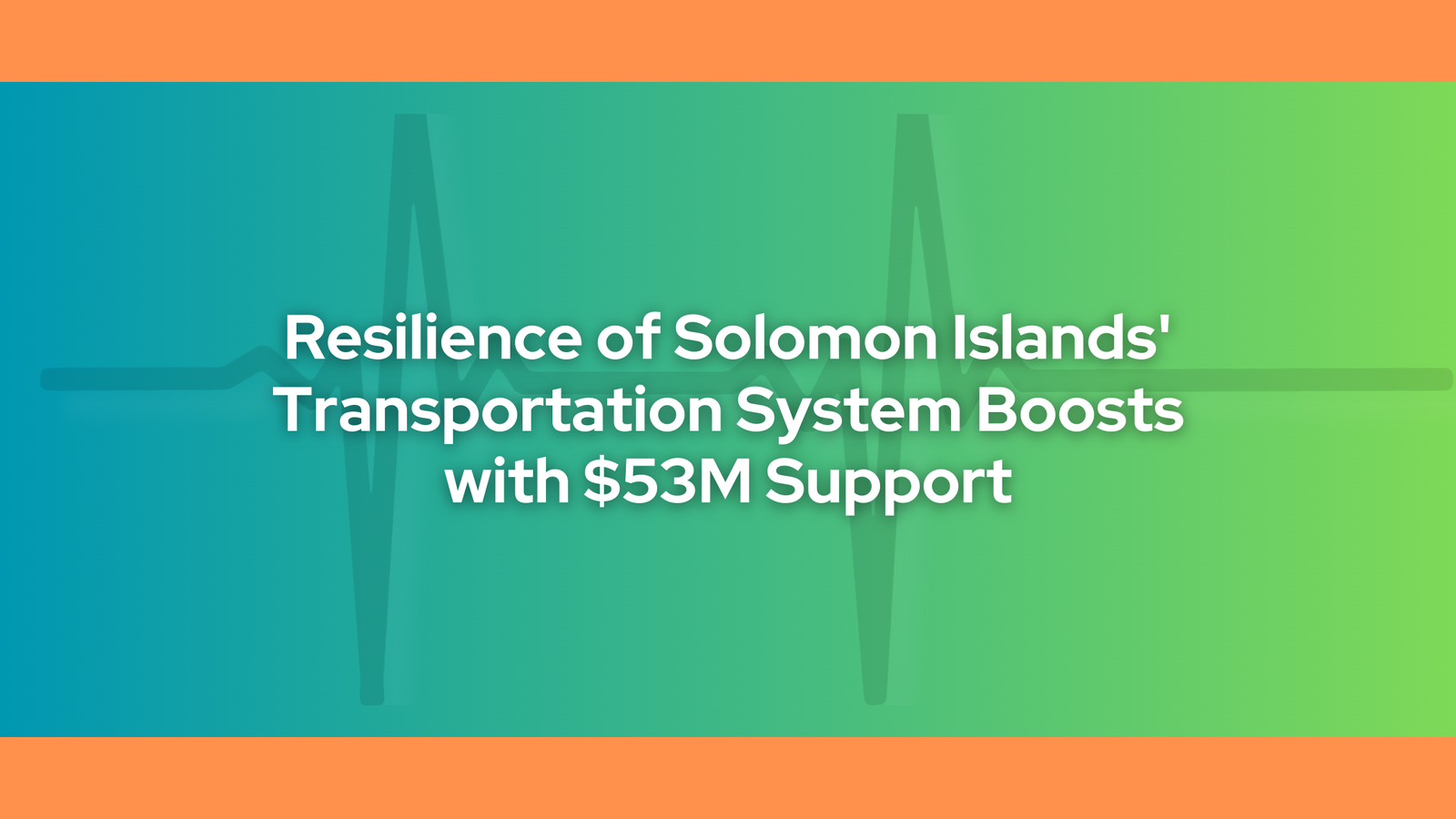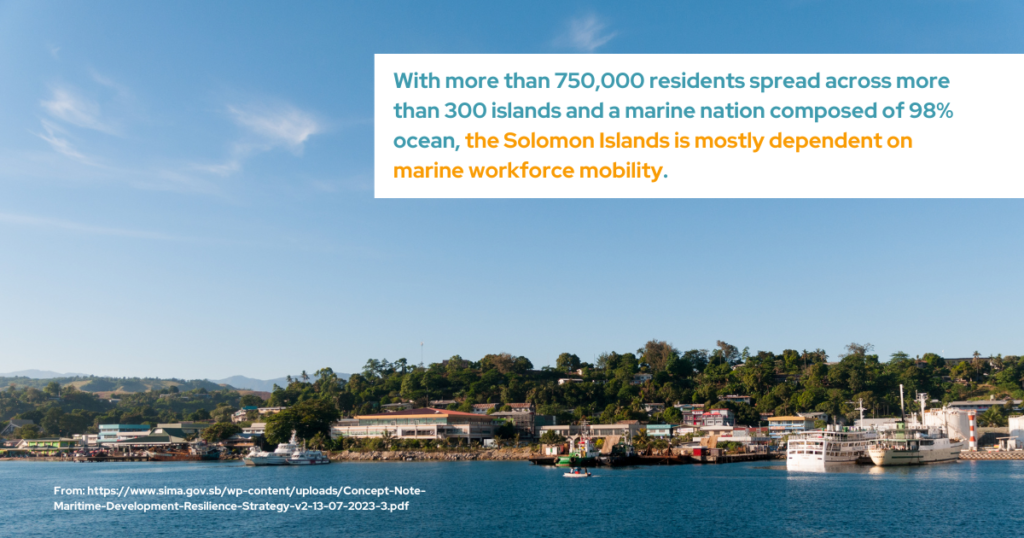
For archipelagos like the Solomon Islands, maritime transport is essential for connectivity among the islands. However, as one of the most vulnerable countries to rising sea levels and more frequent extreme weather phenomena, the resilience of the Solomon Islands’ transportation system needs to be strengthened, not just in maritime but also on land.
In October 2024, to help the small island developing state address the escalating challenges posed by climate change, the Asian Development Bank (ADB) awarded the Solomon Islands $53 million as the second tranche of funding for its Land and Maritime Connectivity Project. This initiative involves bolstering the Solomon Islands’ transportation system.
Approved in June 2021, a $74.5 million grant and a $74.4 million concessional loan financed the Land and Maritime Connectivity Project. The funding comes from the Asian Development Fund, which awards funds to the most impoverished and vulnerable developing nations that are members of the ADB. Of the project’s nearly $171 million total cost, the Solomon Islands government is providing the remaining $21.8 million. ADB can provide the nation’s transportation industry with long-term support because of the project’s 10-year multitranche financing facility.
![Rika Idei, ADB's senior transport specialist, said, "Developing a sustainable transport network will help drive robust socioeconomic growth in [the] Solomon Islands." She added that the project will improve access to markets, health care, and educational resources for Solomon Islanders living in rural and isolated areas.](https://apactenders.com/wp-content/uploads/2025/02/image-4.png)
Roads, bridges, and wharves have sustained major damage because of the increased frequency of typhoons and hurricanes that bring floods and tsunamis, especially in Pacific island nations like the Solomon Islands. Traffic loads have prematurely shortened the design duration of many of these infrastructures. Built years ago, they have also suffered significant damage from climate change and neglect.
While also being more susceptible to the dangers posed by climate change, developing nations are also the least able to afford annual budget allocation for repairing infrastructure damaged by climate change. Add to that the budget for climate-proofing current infrastructure. Designing better and climate-resilient systems while considering sustainable maintenance must be considered in building transportation systems.
Rika Idei, ADB’s senior transport specialist, said, “Developing a sustainable transport network will help drive robust socioeconomic growth in [the] Solomon Islands.” She added that the project will improve access to markets, health care, and educational resources for Solomon Islanders living in rural and isolated areas.
Tranche 2 will include the first tranche’s road transport infrastructure repair and climate-proofing. Work has begun on the remaining 26 km of the Henderson-Mberande road stretch. While improvements are still underway for the 3.1 km Town Ground-White River segment and the 1.7 km Honiara City Council-Ground section, these roads are vital to Guadalcanal Island’s communities and economy.
The road design incorporates climate resilience elements to guarantee year-round access along the island’s east-west corridor. The project will also include a five-year performance-based maintenance program to sustain the road’s durability and quality.

With more than 750,000 residents spread across more than 300 islands and a marine nation composed of 98% ocean, the Solomon Islands is mostly dependent on marine workforce mobility. This includes port and shipping and maritime mobility. The maritime sector could be an important contributor to the country’s economic growth, aside from building connections within the island communities, if given a focus.
The Solomon Islands is also putting itself in a better position to manage both routine traffic and emergency response scenarios during climate-related disruptions by updating and strengthening port facilities. This is consistent with the national maritime resilience plan, which places a high priority on local communities’ safety and economic sustainability as sources of income. Enhanced maritime infrastructure not only supports the community but also strengthens economic growth by boosting the efficiency and resilience of the maritime sector.
The second tranche will also rehabilitate maritime transport infrastructure. Many anticipate the improvement of the project’s provincial wharves in Kira Kira and Ahanga to commence soon. Included in the provincial wharves will be passenger buildings and marketplaces.
Institutional reform is a crucial component of this initiative, particularly in the second tranche. The ADB is working to ensure that the improvement of the resilience of the Solomon Islands’ transportation system is inclusive. One aspect of this assistance is creating a gender plan to assist women in technical and leadership positions within the Ministry of Infrastructure Development.